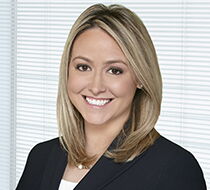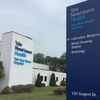Processing Your Payment
Please do not leave this page until complete. This can take a few moments.
-
News
-
Editions
-
- Lists
-
Viewpoints
-
HBJ Events
-
Event Info
- 2024 Economic Outlook Webinar Presented by: NBT Bank
- Best Places to Work in Connecticut 2024
- Top 25 Women In Business Awards 2024
- Connecticut's Family Business Awards 2024
- What's Your Story? A Small Business Giveaway 2024 Presented By: Torrington Savings Bank
- 40 Under Forty Awards 2024
- C-Suite and Lifetime Achievement Awards 2024
- Connecticut's Health Care Heroes Awards 2024
-
-
Business Calendar
-
Custom Content
- News
-
Editions
View Digital Editions
Biweekly Issues
- April 29, 2024
- April 15, 2024
- April 1, 2024
- March 18, 2024
- March 4, 2024
- February 19, 2024
- February 5, 2024
- January 22, 2024
- January 8, 2024
- + More
Special Editions
- Lists
- Viewpoints
-
HBJ Events
Event Info
- View all Events
- 2024 Economic Outlook Webinar Presented by: NBT Bank
- Best Places to Work in Connecticut 2024
- Top 25 Women In Business Awards 2024
- Connecticut's Family Business Awards 2024
- What's Your Story? A Small Business Giveaway 2024 Presented By: Torrington Savings Bank
- 40 Under Forty Awards 2024
- C-Suite and Lifetime Achievement Awards 2024
- Connecticut's Health Care Heroes Awards 2024
Award Honorees
- Business Calendar
- Custom Content
Where’s the money?: Webinar probes the what, the ‘how’ — and above all, the ‘when’ — of federal PPP loan program for CT businesses
 PHOTO | Contributed
Robinson + Cole’s Shea outlined eligibility and terms of use for PPP loan proceeds.
PHOTO | Contributed
Robinson + Cole’s Shea outlined eligibility and terms of use for PPP loan proceeds.
On Friday afternoon New Haven BIZ and the Hartford Business Journal presented a timely webinar, The CARES Act and the PPP: Where Are We Today, and What Can Businesses Expect Tomorrow?
On April 3 the federal Paycheck Protection Program (PPP), a $350 billion emergency package to rescue small businesses, began accepting applications from beleaguered companies throughout Connecticut and the nation.
The PPP is a cornerstone of the government’s $2 trillion stimulus plan to help the economy deal with the commercial consequences of the global coronavirus pandemic.
The loans, which feature a 1-percent interest rate, were designed to keep employees on payrolls for eight weeks, limiting the soaring numbers of workers applying for unemployment checks, which had reached 16.6 million in just over three weeks. Borrowers who retain or rehire most of their employees may be reimbursed for the entire loan amount and interest.
In just the first few days of the program, Connecticut banks had approved some 1,300 PPP loans totaling about $640 million for small businesses — although the actual cash spigot had yet to flow.
The purpose of the NHB session was to help business owners navigate the PPP and other federal and state initiatives and emergency measures crafted to help shepherd small businesses through the COVID crisis until some measure of commercial normalcy is restored.
The session was moderated by Hartford Business Journal Editor Greg Bordonaro. “The purpose of this discussion is to move beyond PPP 101 and get [business owners] up to speed with where things stand right now with the program, which provides low-interest and potentially forgivable loans to small businesses to keep workers on their payroll,” he said in introducing the session.
The first week of the national rollout of the PPP initiative was plagued with delays and administrative snafus stemming from the unprecedented (and unforeseen) volume of applications and queries.
“It has gotten off to a rocky start, but has also drawn a ton of interest — some 500,000 applications as of Thursday, afternoon, with $130 billion in loans approved,” Bordonaro said.
“There’s lots of demand out there,” he added.
Even so, some financial institutions have been able to respond faster than others.
In Connecticut, Webster Bank processed more than 6,400 applications in the first week of the PPP program beginning April 3. On Friday afternoon, Webster’s regional president for the Hartford market, Tim Bergstrom, outlined the program.
Featuring an interest rate of 1 percent, PPP loans are made through individual banks and guaranteed by the SBA. The dollar volume of the loans is 250 percent of the applicant business’ monthly payroll, with a limit of $100,000 per employee. Loan proceeds are to be used to meet payroll, as well as to pay rent, mortgage (interest only) and utilities. The loans feature a six-month repayment holiday and a 24-month maturity period — but are forgiven if the company maintains payroll over the term of the loan.
“From a banker’s perspective, this program was rolled out rapidly, with guidance from the SBA that was running way behind news cycles,” Bergstrom acknowledged. “It’s been a challenge for each bank to handle the influx of applications — 50 or 60 times what you would see during a normal period. And I understand there’s anxiety on the part of business owners: ‘Will funds run out before I can complete the application process, and when will I get this money?’ ”
Notwithstanding the many obstacles and the unprecedented demand for PPP loans, “We are processing these as quickly as possible,” Bergstrom said. And the best news of all: “We did start funding loans yesterday [April 9],” he added.
The federal legislative perspective on the PPP program was provided by U.S. Rep. John Larson (D-1), who acknowledged that the week since the application process opened “has been a challenge for our lenders, and a lot of hiccups have taken place.”
For one thing, Larson said, the SBA during “normal” times processes some 800,000 loans applications in a year; since April 3 the agency had been flooded with 250,000 in just five business days.
“The SBA is working around the clock to get these funds out” to businesses, he assured listeners.
Larson expressed concern that very small businesses, particularly in minority or traditionally underserved communities, not be “left behind” and said he planned to work with colleagues in Washington to ensure that doesn’t happen. He said he was optimistic that a “Phase 4” of the stimulus package would soon be approved, although at close of business on Friday leaders of both parties in Congress were still debating details.
“I believe that we will get together to pass in a bipartisan way an additional $250 billion in assistance to small businesses, another $100 billion for hospitals, community health centers and health-care systems, and another $150 billion for state and local governments,” Larson said. “We’re all in this together.”
Taylor A. Shea, a partner with the Hartford law firm of Robinson + Cole, discussed the most immediate practical legal concerns for companies seeking loans under the new stimulus package — eligibility and terms and conditions governing the use of loan proceeds.
Shea noted that independent contractors and sole proprietors are indeed eligible for PPP loans. On the other end of the eligibility scale are companies with multiple divisions, affiliates or business units that, taken individually, employ fewer than the 500-employee “small business” threshold, but exceed the limit in the aggregate. The key determinant, Shea said, is common ownership and legal “control” over the multiple business units in question.
Two PPP loan conditions have important practical takeaways, Shea said. At least 75 percent of loan proceeds must be used directly for payroll costs; the remainder can be used for mortgage and lease payments as well as utility bills. Misapplication of loan proceeds may void the forgiveness provision and require repayment in full, she said.
Additionally, the borrower must certify that loan proceeds are needed as a result of the current COVID-related business slowdown and used to fund payroll and other eligible uses and not simply to fund ongoing operations, Shea said.
Drew Andrews, managing partner and CEO of the Hartford-headquartered CPA firm Whittlesey, explained that successful applicants have eight weeks to use the loan proceeds in order to be eligible for loan forgiveness.
“The key is to remember the spirit of the loan, which is to get employees back to work at their previous employment rates,” Andrews said. At the end of the eight weeks after receiving loan proceeds, the company in question should have an employment level equivalent to before the emergency began.
“There’s not a lot of guidance on this yet” from the SBA, Andrews acknowledged. “I think there will be more guidance developed as time goes on. I tell [clients] to use [loan] proceeds for the intent — to get people back to work.”
Bergstrom offered the last and perhaps most practical counsel: “The best advice I’d leave business owners who have applications pending with their bank: Be patient and stay calm.”A second session of the NHB webinar series will take place at 1 p.m. Wednesday, April 15. Information and registration details are available HERE.

2022 Giving Guide
This special edition informs and connects businesses with nonprofit organizations that are aligned with what they care about. Each nonprofit profile provides a crisp snapshot of the organization’s mission, goals, area of service, giving and volunteer opportunities and board leadership.
Learn more
Subscribe
Hartford Business Journal provides the top coverage of news, trends, data, politics and personalities of the area’s business community. Get the news and information you need from the award-winning writers at HBJ. Don’t miss out - subscribe today.
Subscribe
2024 Book of Lists
Delivering Vital Marketplace Content and Context to Senior Decision Makers Throughout Greater Hartford and the State ... All Year Long!
Read Here-
2022 Giving Guide
This special edition informs and connects businesses with nonprofit organizations that are aligned with what they care about. Each nonprofit profile provides a crisp snapshot of the organization’s mission, goals, area of service, giving and volunteer opportunities and board leadership.
-
Subscribe
Hartford Business Journal provides the top coverage of news, trends, data, politics and personalities of the area’s business community. Get the news and information you need from the award-winning writers at HBJ. Don’t miss out - subscribe today.
-
2024 Book of Lists
Delivering Vital Marketplace Content and Context to Senior Decision Makers Throughout Greater Hartford and the State ... All Year Long!
ABOUT
ADVERTISE
NEW ENGLAND BUSINESS MEDIA SITES
No articles left
Get access now
In order to use this feature, we need some information from you. You can also login or register for a free account.
By clicking submit you are agreeing to our cookie usage and Privacy Policy
Already have an account? Login
Already have an account? Login
Want to create an account? Register
Get access now
In order to use this feature, we need some information from you. You can also login or register for a free account.
By clicking submit you are agreeing to our cookie usage and Privacy Policy
Already have an account? Login
Already have an account? Login
Want to create an account? Register






0 Comments